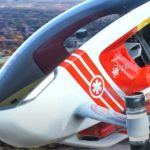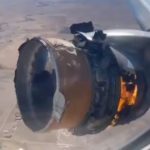Perseverance, NASA’s most advanced rover touched down on Mars yesterday after a 203-day journey traversing 293 million miles. The successful touchdown was announced at mission control in NASA’s Jet Propulsion Laboratory (JPL) in Southern California at 3:55 pm EST.
The Mars 2020 mission launched July 30, 2020, from Cape Canaveral Space Force Station in Florida. The Perseverance rover mission is the first step in the effort to collect Mars samples and return them to Earth.
Acting NASA Administrator Steve Jurczyk said: “This landing is one of those pivotal moments for NASA, the United States, and space exploration globally – when we know we are on the cusp of discovery and sharpening our pencils, so to speak, to rewrite the textbooks.”
“The Mars 2020 Perseverance mission embodies our nation’s spirit of persevering even in the most challenging of situations, inspiring, and advancing science and exploration. The mission itself personifies the human ideal of persevering toward the future and will help us prepare for human exploration of the Red Planet.”
Robot geologist is the size of a car
Perseverance is about the size of a car, the 2,263-pound robotic geologist and astrobiologist will undergo several weeks of testing before it begins its two-year science investigation of Mars’ Jezero Crater. While the rover will investigate the rock and sediment of Jezero’s ancient lakebed and river delta to characterize the region’s geology and past climate, a fundamental part of its mission is astrobiology, including the search for signs of ancient microbial life.
The Mars Sample Return campaign, being planned by NASA and ESA (European Space Agency), will allow scientists on Earth to study samples collected by Perseverance to search for definitive signs of past life using instruments too large and complex to send to the Red Planet.
Thomas Zurbuchen, associate administrator for science at NASA, said: “Because of today’s exciting events, the first pristine samples from carefully documented locations on another planet are another step closer to being returned to Earth. Perseverance is the first step in bringing back rock and regolith from Mars. We don’t know what these pristine samples from Mars will tell us. But what they could tell us is monumental – including that life might have once existed beyond Earth.”
Perseverance will scour Jezero Crater for fossilised remains
Jezero Crater is 28 miles wide and sits on the western edge of Isidis Planitia, a giant impact basin just north of the Martian equator. Scientists have determined that 3.5 billion years ago the crater had its own river delta and was filled with water.
Perseverance is powered system by a Multi-Mission Radioisotope Thermoelectric Generator, or MMRTG. This was provided to NASA by the US Department of Energy (DOE) through an ongoing partnership to develop power systems for civil space applications.
The rover is equipped with seven primary science instruments, the most cameras ever sent to Mars, and a complex sample caching system – the first of its kind sent into space. Perseverance will scour the Jezero region for fossilised remains of ancient microscopic Martian life, taking samples along the way.
“Perseverance is the most sophisticated robotic geologist ever made, but verifying that microscopic life once existed carries an enormous burden of proof,” said Lori Glaze, director of NASA’s Planetary Science Division. “While we’ll learn a lot with the great instruments we have aboard the rover, it may very well require the far more capable laboratories and instruments back here on Earth to tell us whether our samples carry evidence that Mars once harboured life.”
Paving the Way for Human Missions
JPL Director Michael Watkins said: “Landing on Mars is always an incredibly difficult task and we are proud to continue building on our past success. But, while Perseverance advances that success, this rover is also blazing its own path and daring new challenges in the surface mission. We built the rover not just to land but to find and collect the best scientific samples for return to Earth, and its incredibly complex sampling system and autonomy not only enable that mission, they set the stage for future robotic and crewed missions.”
The Mars Entry, Descent, and Landing Instrumentation 2 (MEDLI2) sensor suite collected data about Mars’ atmosphere during entry, and the Terrain-Relative Navigation system autonomously guided the spacecraft during final descent. The data from both are expected to help future human missions land on other worlds more safely and with larger payloads.
An Ingenuity Mars Helicopter is a technology which is attached underneath Peserverance will attempt the first powered, controlled flight on another planet.
Project engineers and scientists will now put Perseverance through its paces, testing every instrument, subsystem, and subroutine over the next month or two. Only then will they deploy the helicopter to the surface for the flight test phase. If successful, Ingenuity could add an aerial dimension to exploration of the Red Planet in which such helicopters serve as a scouts or make deliveries for future astronauts away from their base.
Mini helicopter will search for evidence of microbial life
Once Ingenuity’s test flights are complete, the rover’s search for evidence of ancient microbial life will begin in earnest.
“Perseverance is more than a rover, and more than this amazing collection of men and women that built it and got us here,” said John McNamee, project manager of the Mars 2020 Perseverance rover mission at JPL. “It is even more than the 10.9 million people who signed up to be part of our mission. This mission is about what humans can achieve when they persevere. We made it this far. Now, watch us go.”
Subsequent NASA missions, in cooperation with ESA, will send spacecraft to Mars to collect these cached samples from the surface and return them to Earth for in-depth analysis.
The Mars 2020 Perseverance mission is part of NASA’s Moon to Mars exploration approach, which includes Artemis missions to the Moon that will help prepare for human exploration of the Red Planet.
JPL, a division of Caltech in Pasadena, California, manages the Mars 2020 Perseverance mission and the Ingenuity Mars Helicopter technology demonstration for NASA.

